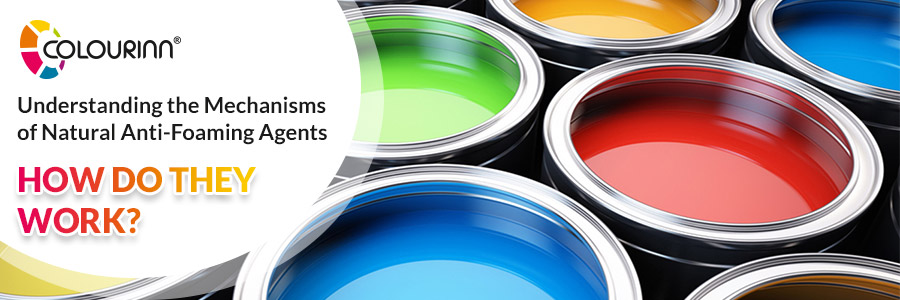In a wide range of industries, from food and beverages to textiles and pharmaceuticals, foam formation can pose significant operational challenges. Anti-foaming agents, therefore, play an essential role in overcoming these obstacles. This article aims to delve into the fascinating world of natural antifoaming agents, exploring their mechanisms and shedding light on how they function.
The Phenomenon of Foaming and its Challenges
Foam, in its most basic form, is a collection of gas bubbles trapped in a liquid or solid substance. This non-harmful phenomenon can be seen in everyday life, from the froth of a morning latte to the lather of a good shampoo. Yet, despite its commonality, foaming can pose considerable challenges when it occurs in industrial settings.
In many industrial processes, the formation of foam can significantly impair efficiency. Foam can lead to an overestimation of liquid volumes, impede the filling of containers, cause pump cavitation, and even result in overflow and spillages.
In extreme cases, the presence of foam can compromise the quality of end products or lead to hazardous working conditions. For instance, in the textile industry, excessive foam can hinder the even distribution of dyes and chemicals, affecting the uniformity of the final product. Thus, controlling and mitigating foam is of utmost importance in these settings.
Natural Anti-Foaming Agents: An Introduction
To combat the issue of unwanted foam, industries turn to antifoaming agents.
Antifoaming agents are additives that, when introduced into a foaming liquid, serve to reduce the formation of foam or facilitate the rapid collapse of any formed foam.
Traditionally, many of these agents have been synthetic compounds. However, in line with the increasing global emphasis on sustainability and eco-friendly practices, there’s been a shift towards natural anti-foaming agents.
Natural anti-foaming agents are derived from natural sources and are generally considered to be more environmentally friendly and safer than their synthetic counterparts. They encompass a wide range of substances, including various plant oils and natural esters.
Examples of natural anti-foaming agents include oils from sunflower, cottonseed, and rapeseed, as well as components like lecithin, derived from egg yolks and soybeans.
The Mechanism of Natural Anti-Foaming Agents
Understanding how natural antifoaming agents work requires a delve into the realm of surface chemistry. These agents operate through a few key processes:
- Reduction of Surface Tension: Foams are essentially a network of gas bubbles separated by thin liquid films. The stability of these films is largely dependent on the surface tension of the liquid. Natural anti-foaming agents work by reducing this surface tension, making it harder for the liquid to form and sustain foam.
- Rupture of Foam Lamellae: The foam lamella is the thin liquid film that forms the wall of a foam bubble. Anti-foaming agents, when added to the system, spread along these walls and destabilize them, leading to the rupture of the foam bubbles.
- Preventing Bubble Coalescence: In a foaming system, smaller bubbles often join together to form larger ones, a process known as coalescence. Natural anti-foaming agents can prevent this by creating a repulsive force between the bubbles, thereby reducing the overall volume of the foam.
The Advantages of Natural Anti-Foaming Agents
In the battle against foaming, natural antifoaming agents provide a multitude of benefits that extend beyond their foam-controlling capabilities.
- Environmental Friendliness: As they are derived from renewable resources, natural anti-foaming agents are inherently more sustainable than synthetic ones. They contribute less to pollution and the depletion of non-renewable resources.
- Biodegradability: Natural anti-foaming agents are often biodegradable, which means they can be broken down by natural processes into non-toxic substances. This makes them a more ecologically sound choice, as they minimize harmful impacts on ecosystems when discharged in effluents.
- Safety: Generally, natural anti-foaming agents are safer to handle and pose less risk to human health. This is crucial for industries such as food and beverage, pharmaceuticals, and cosmetics, where the products come into direct contact with humans.
- Performance: Despite being natural, these agents do not compromise performance. They can be just as effective as synthetic ones, if not more so in certain applications.
Conclusion
Understanding the mechanisms and advantages of natural antifoaming agents paves the way toward more sustainable industrial practices. At Colourinn, we recognize this demand for greener solutions and are committed to fulfilling it. We pride ourselves on manufacturing high-quality natural anti-foaming agents, designed to meet industry needs while also safeguarding our environment.
In our quest to make the textile industry safer and more sustainable, we are constantly innovating and improving our offerings. By choosing Colourinn, you’re not just selecting a product, but you’re choosing to support an eco-conscious, sustainable future.
Are you ready to make the switch and contribute to a greener industry? Contact us today and explore our range of natural antifoaming agents. Embrace the Colourinn way – where colour meets sustainability.
Frequently Asked Questions:
Q1: What exactly are organic anti-foaming agents?
Ans: Natural anti-foaming agents are compounds that come from plants, animals, or microbes that have the power to lessen or completely get rid of foam production in a variety of liquids. These chemicals are used to avoid excessive foam accumulation, which can obstruct operations and result in operational inefficiencies, in a variety of sectors, including food and beverage, pharmaceuticals, wastewater treatment, and more.
Q2: How do natural foam-fighting chemicals function?
Ans: Natural anti-foaming compounds use a number of different processes to stifle or weaken foam bubbles. In order to make it harder for foam bubbles to develop and retain their shape, one typical approach is to lower the liquid’s surface tension.
Q3: How do you make anti-foaming agents?
Ans: The general process by which these antifoam agents are made requires that a mixture of the dimethylpolysiloxane fluid and the untreated and/or treated fumed silica filler be initially heated to about 150° C. in order to disperse the filler. The mixture is then homogenized under pressure or milled and cooled.

